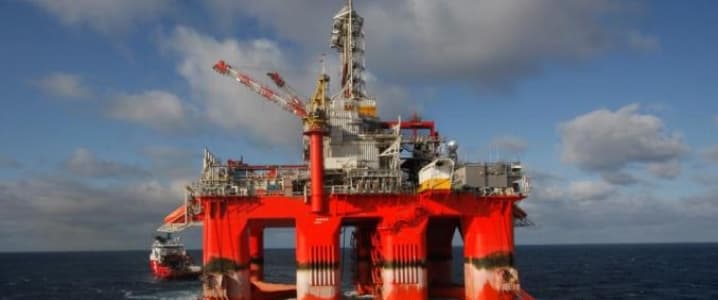Over the last decade, driven by high growth and increasing demand, oil prices soared to $140 per barrel. Then came 2016, and per-barrel prices plummeted to $30. What happened?
The European economy slowdown, emerging economies’ diminishing oil demand, OPEC maintaining pumping volumes, the return of Iran to regain their market share, and rising U.S. shale production all contributed to an enormous oil supply glut around the globe.
This situation resulted in storing oil in floating vessels and dumping in landfills, thus leading to a contango scenario—where future prices are higher than the expected future spot price, and investors pay premiums for storage costs.
Here, we’ll examine the oil majors’ strategies in this downturn scenario to regain shareholders’ confidence and redefine market positions.
Investments in 2016 have reduced substantially for oil majors, as rising oil price volatility led to redefining their positions by strategic acquisition opportunities and cutting capital expenditure (CAPEX). The final investment decisions (FIDs) of some important projects are still delayed, and some big scale projects were scrapped for the time being.
Now, the majors are combatting this scenario by reducing dividends paid to shareholders, and by cutting down the shares buybacks (Fig 2). The oil and gas sector is becomingly highly valued for income rather than capital growth; hence, the payouts became a predominant factor for these companies.
Companies with positive operating cash flow via their operating activities, negative investing cash flow by investing at their own advantage, and positive financing cash flow by attracting investors are classical companies that are rapidly growing and in excellent financial condition. The oil majors have burned cash in the last two years, considerably reducing their operating cash flow (Fig 1). Related: China’s Mysterious Arctic Silk Road
Fig 1 – Operating cash flow, Capex & FCF of oil majors (2010-2016)

(Click to enlarge)
Source: Reuters, barcharts.com, Annual reports
Free cash flow (FCF) was considerably reduced, and for some it tuned negative. The leverage ratio (Fig 3) of the oil majors kept rising through these years as they debt financed their dividends and CAPEX.
Fig 2 Dividends & Share buybacks of oil majors (2010-2016)

(Click to enlarge)
Source: Reuters, barcharts.com, Annual reports
The breakeven of these companies in 2016 was in the high $50 to low $60 mark during this period, with the average oil price at $40. The real focus: cutting costs and sticking with generated cash flow.
Some strategic acquisitions were carried out by exploration and production (E&P) companies, which would benefit them in the long term. Shell’s acquisition of BG and Total’s acquisition of Maersk’s oil and gas business were the highlights in the low oil price era, as these companies took advantage of the low-cost environment, investing in profitable projects and acquiring new resources in attractive conditions.
Reserve life is the number of years a company can sustain its current production level with the booked reserves. The E&P companies’ sustainability is enhanced with the reserve life going up, either by organic growth (successful exploration) or by inorganic growth (merger and acquisition). The reserve life of some of these companies has decreased in the last two years, as cutting costs was the real focus, leading to scaling back the exploration and production activities. Production rates are expected to ramp up in the coming years. And with shrinking fossil fuel reserves, shortage concerns loom large in the market place.

(Click to enlarge)
Fig 3 Leverage ratio = Debt / equity
Source: Reuters
Oil majors’ earnings in recent quarters have beaten estimates—an encouraging sign after three years of low, volatile oil price levels. Many believed the worst of the downturn was over, as seen in the tightening of the markets. Things then switched to a backwardation scenario. This refers to when future prices are below the expected future spot price. Investors roll out their future contracts until the delivery date, as they’re paying less than the spot price. This scenario pushes for the storage decline for the rebalancing of the market. Related: Tesla’s Surprise Unveiling Reveals Fastest Production Car Ever
Most of these companies are better positioned to cash in on the confidence returning to the sector, with oil prices gradually recovering to the low $60s. The oil rally is supported by the strongest economic growth globally, as the consumption rate is rapidly increasing in emerging and developing countries. Tides are turning, with exciting news of a revival of share buybacks by BP.
The consensus reached between OPEC and non-OPEC members in Dec 2016 resulted in the historic oil production cut deal and helped the oil price recovery in 2017. The OPEC members agreed to cut down their production by 1.2 million barrels per day. The non-OPEC members are doing their part by reducing their levels by 600,000 barrels per day.
The recent geopolitical tensions and efforts of the Middle East—along with Russia—to sustain the production cuts and push the deal beyond March 2018 are the real driving factors for the recent oil market rally, and investors are skeptically bullish in the short term.
If the most significant uncertainty factors (like geopolitical tensions) can co-exist with the production cut deal extension among OPEC & non-OPEC members through the end of 2018, oil prices will be extremely volatile—setting a bullish tone for the markets.
By Luis Colasante for Oilprice.com
More Top Reads From Oilprice.com:
- Oil Survives Bearish Backlash
- Why Saudi Arabia Should Fear U.S. Oil Dominance
- Saudi Sheikdown: Arrested Royals Offered A Deal - Your Money For Your Freedom


















